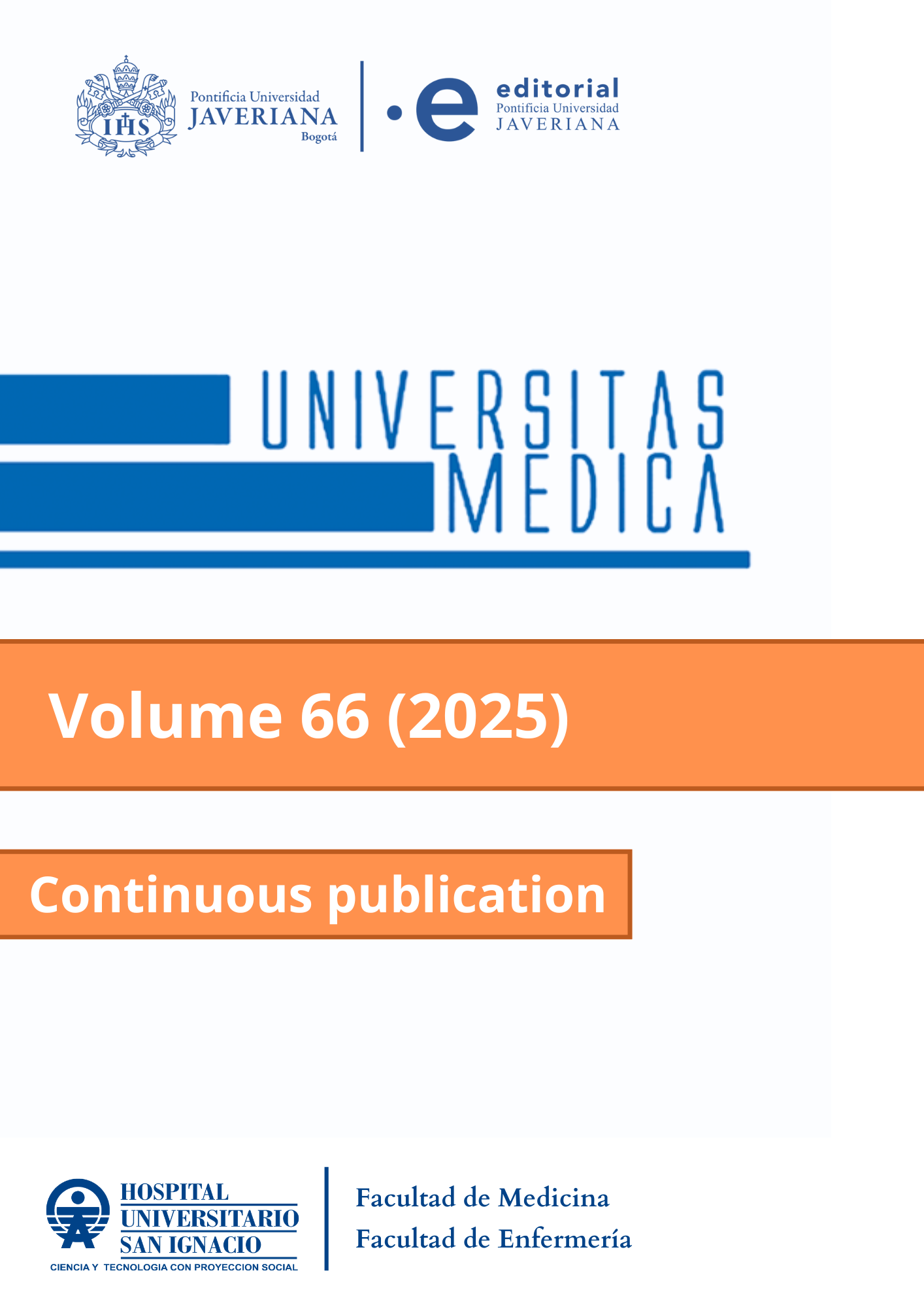Abstract
Introduction: Diabetes is a chronic disease that affects various populations and presents unique challenges due to factors such as body mass index (BMI), blood pressure, and low-density lipoprotein (LDL) concentrations. Additionally, there is a lack of specific studies on Indigenous populations. Objective: To evaluate the relationship between BMI, blood pressure, and LDL cholesterol concentrations with glycemic control in Indigenous patients with diabetes. Methods: A cross-sectional study was conducted at the MALLAMAS Indigenous Health Provider (IPS) from 2020 to 2024. Data on BMI, blood pressure, LDL cholesterol, and glycated hemoglobin (HbA1c) were analyzed using descriptive techniques and logistic regression models. Results: Among the 609 Indigenous individuals analyzed, 38.95% were men. Each additional unit of BMI reduced the odds ratio for having HbA1c > 7% by 6.7% (OR = 0.933; 95% CI: 0.885-0.984). Patients with poorer glycemic control showed higher systolic (p = 0.0356) and diastolic (p = 0.0004) blood pressure levels. Uncontrolled hypertension significantly increased the odds of poor glycemic control (p = 0.022). No significant association was observed between LDL cholesterol and glycemic control. Conclusion: Uncontrolled hypertension and elevated BMI are associated with poorer diabetes control in this population; however, the lack of association between LDL cholesterol and glycemic control suggests the need to explore other contextual factors. These findings underscore the importance of comprehensive and culturally sensitive diabetes management in Indigenous communities.
1. Young TK, Reading J, Elias B, O’Neil JD. Type 2 diabetes mellitus in Canada’s first nations: status of an epidemic in progress. CMAJ [internet]. 2000;163(5):561-6. Disponible en: https://pmc.ncbi.nlm.nih.gov/articles/PMC80466/
2. Dyck R, Osgood N, Lin TH, Gao A, Stang MR. Epidemiology of diabetes mellitus among First Nations and non-First Nations adults. CMAJ. 182(3):249-56. https://doi.org/10.1503/cmaj.090846
3. Harris SB, Gittelsohn J, Hanley A, Barnie A, Wolever TM, Gao J, et al. The prevalence of NIDDM and associated risk factors in native Canadians. Diabetes Care. 1997;20(2):185-7. https://doi.org/10.2337/diacare.20.2.185
4. Chopra S, Lahiff TJ, Franklin R, Brown A, Rasalam R. Effective primary care management of type 2 diabetes for indigenous populations: a systematic review. Plos One. 2022;17(11):e0276396. https://doi.org/10.1371/journal.pone.0276396
5. Oster RT, Grier A, Lightning R, Mayan MJ, Toth EL. Cultural continuity, traditional Indigenous language, and diabetes in Alberta First Nations: a mixed methods study. Int J Equity Health. 2014;13:92. https://doi.org/10.1186/s12939-014-0092-4
6. Jiang L, Manson SM, Beals J, Henderson WG, Huang H, Acton KJ, et al. Translating the Diabetes Prevention Program Into American Indian and Alaska Native Communities. Diabetes Care. 2013;36(7):2027-34. https://doi.org/10.2337/dc12-1250
7. Jiang L, Chang J, Beals J, Bullock A, Manson SM, Special Diabetes Program for Indians Diabetes Prevention Demonstration Project. Neighborhood characteristics and lifestyle intervention outcomes: results from the Special Diabetes Program for Indians. Prev Med. 2018;111:216-24. https://doi.org/10.1016/j.ypmed.2018.03.009
8. Gomes HLM, Sombra NM, Cordeiro EDDO, Filho ZADS, Toledo NDN, Mainbourg EMT, et al. Glycemic profile and associated factors in indigenous Munduruku, Amazonas. Plos One. 2021;16(9):e0255730. https://doi.org/10.1371/journal.pone.0255730
9. Bernabe-Ortiz A, Carrillo-Larco RM, Miranda JJ. Association between body mass index and blood pressure levels across socio-demographic groups and geographical settings: analysis of pooled data in Peru. Peer J. 2021;9:e11307. https://doi.org/10.7717/peerj.11307
10. Oliveira GF, Oliveira TRR, Ikejiri AT, Andraus MP, Galvao TF, Silva MT, et al. Prevalence of hypertension and associated factors in an indigenous community of Central Brazil: A population-based study. PLoS One. 2014;9(1):e86278. https://doi.org/10.1371/journal.pone.0086278
11. De Souza Filho ZA, Ferreira AA, Dos Santos J, Meira KC, Pierin AMG. Cardiovascular risk factors with an emphasis on hypertension in the Mura Indians from Amazonia. BMC Public Health. 2018;18(1):1251. https://doi.org/10.1186/s12889-018-6160-8
12. Huang R, Song C, Li T, Yu C, Yao T, Gao H, et al. A cross-sectional comparative study on the effects of body mass index and exercise/sedentary on serum asprosin in male college students. PLoS One. 2022;17(4):e0265645. https://doi.org/10.1371/journal.pone.0265645
13. Huang J, Lin H, Wang S, Li M, Wang T, Zhao Z, et al. Association between serum LDL‐C concentrations and risk of diabetes: a prospective cohort study. J Diabetes. 2023;15(10):881-9. https://doi.org/10.1111/1753-0407.13440
14. Cheran K, Murthy C, Bornemann EA, Kamma HK, Alabbas M, Elashahab M, et al. The growing epidemic of diabetes among the indigenous population of Canada: a systematic review. Cureus. 15(3):e36173. https://doi.org/10.7759/cureus.36173
15. Rusk AM, Kanj AN, Murad MH, Hassett LC, Kennedy CC. Smoking cessation interventions in indigenous north americans: a meta-narrative systematic review. Nicotine Tob Res. 2022;25(1):3-11. https://doi.org/10.1093/ntr/ntac181
16. Tremblay M, Bradette‐Laplante M, Witteman HO, Dogba MJ, Breault P, Paquette J, et al. Providing culturally safe care to Indigenous people living with diabetes: Identifying barriers and enablers from different perspectives. Health Expect Int J Public Particip Health Care Health Policy. 2021;24(2):296-306. https://doi.org/10.1111/hex.13168
17. Dedefo MG, Abate SK, Ejeta BM, Korsa AT. Predictors of poor glycemic control and level of glycemic control among diabetic patients in west Ethiopia. Ann Med Surg. 2020;55:238-43. https://doi.org/10.1016/j.amsu.2020.04.034

This work is licensed under a Creative Commons Attribution 4.0 International License.
Copyright (c) 2025 Christian Danilo Perugache Rosero



